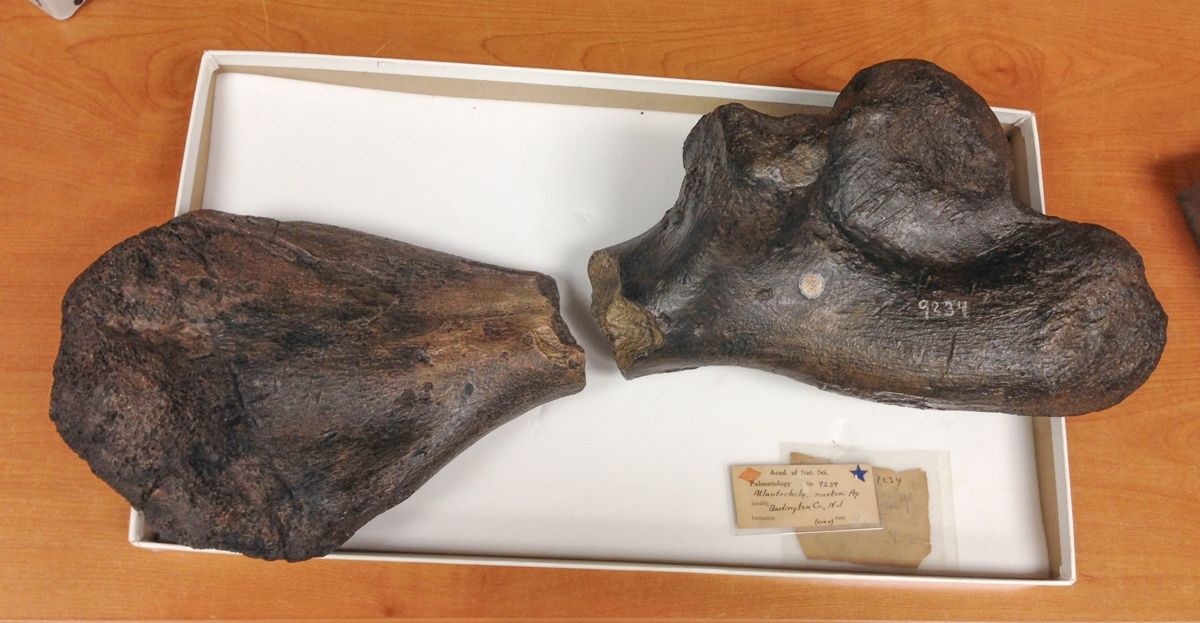
Fossil Fragments Reveal Enormous Ancient Turtle (Video)

Rachel Ewing is a news officer for science and health at Drexel University. She contributed this article to Live Science's Expert Voices: Op-Ed & Insights.
When an amateur collector brought a strange, heavy fossil to the New Jersey State Museum, paleontologists David Parris and Jason Schein never imagined the surprise it had in store.
They recognized the fossil as a humerus — the large upper arm bone — from a turtle, but one that had broken in half so only the distal, elbow-connected end remained.
Parris also thought the fossil looked familiar. He thought the resemblance to a fossil he had studied years earlier in the collections at the Academy of Natural Sciences of Drexel University was coincidental. That turtle humerus had only the shoulder end of the bone.
But conventional wisdom held that they couldn't possibly be the same bone. The older specimen, discovered in 1849 or earlier, was much too old. Its missing half should have deteriorated from exposure within decades.
The academy's older bone was also one of a kind: It was the first, and to that date only, specimen of its genus and species (Atlantochelys mortoni). [Photos: Butterflies Drink Turtle Tears ]
Until the day Schein carried the newfound fossil to the academy in Philadelphia.
Sign up for the Live Science daily newsletter now
Get the world’s most fascinating discoveries delivered straight to your inbox.
"As soon as those two halves came together, like puzzle pieces, you knew it," said Ted Daeschler, the academy paleontologist who helped Schein verify the surprising find.
The two halves were parts of the same bone. One half was collected at least 162 years before the other.
In addition to overturning conventional wisdom, the fully assembled bone made it possible to calculate that this animal was one of the largest sea turtles ever known, about 10 feet from tip to tail.
Follow all of the Expert Voices issues and debates — and become part of the discussion — on Facebook, Twitter and Google+. The views expressed are those of the author and do not necessarily reflect the views of the publisher. This version of the article was originally published on Live Science.













